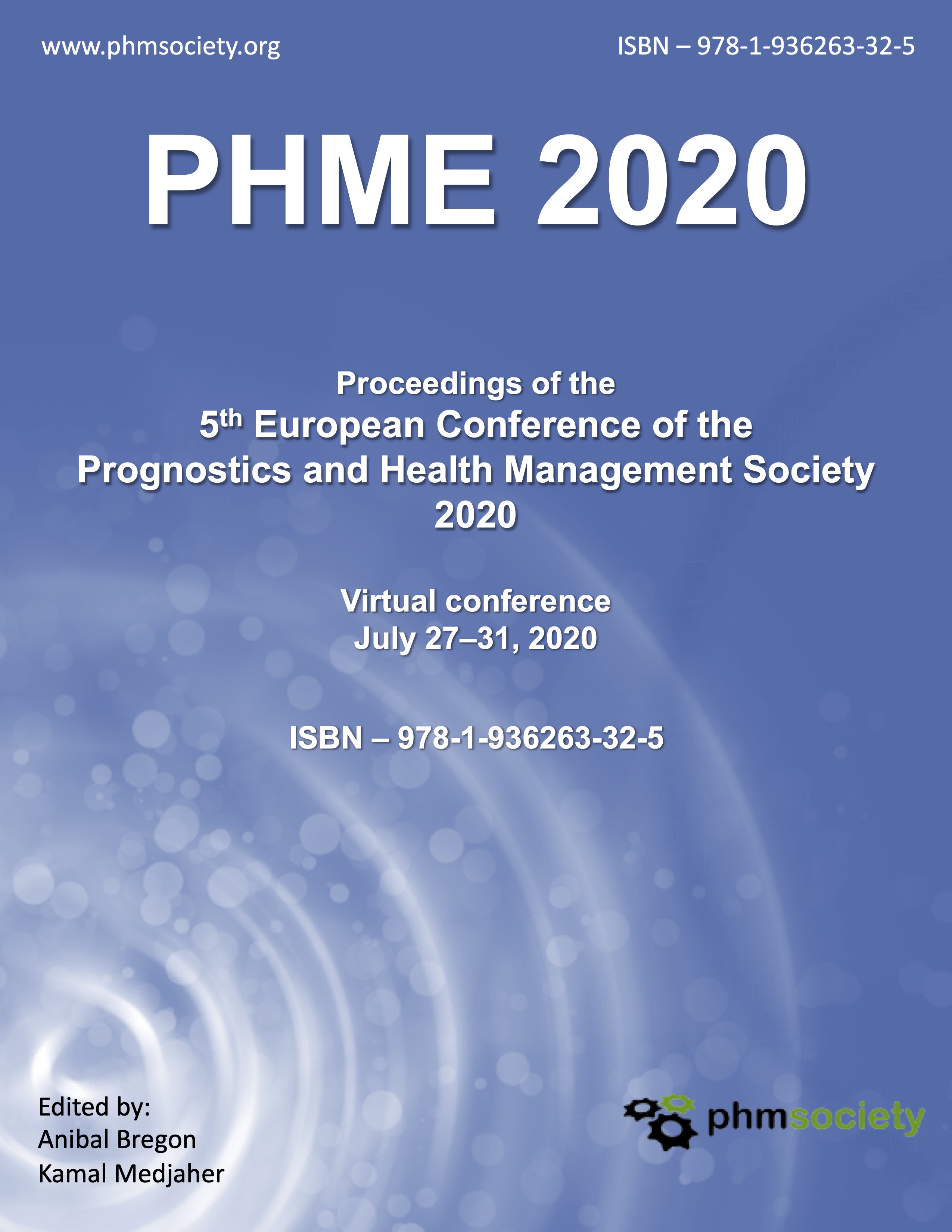A Method to Estimate the Remaining Useful Life of a Filter Using a Hybrid Approach Based on Kernel Regression and Simple Statistics
##plugins.themes.bootstrap3.article.main##
##plugins.themes.bootstrap3.article.sidebar##
Abstract
This paper describes the method used by the Uptime team for the estimation of the remaining useful life of a filter during the 2020 PHM Conference Data Challenge. The proposed method is a hybrid of two methods: (1) based on median lifetime of a filter for a particular contamination profile and (2) kernel regression for a sensor-based prediction after a certain threshold of differential pressure is reached. The threshold value was chosen based on visual assessment followed by grid search for fine tuning. Median lifetime of a filter for unseen contamination profiles was estimated using interpolation. Choosing the right interpolation method was a challenge as training data contained samples with only two values of contamination particle size. Interpolation was chosen based on other publicly available information about the relationship between contamination profile and filter lifetime. The results (ranked 1st with the total penalty score of 49.67) showed that an observation made based on one dataset can be useful for solving similar problems in the case of limited data availability. This suggests that there is a potential for using transfer learning in PHM applications.
How to Cite
##plugins.themes.bootstrap3.article.details##
data challenge
The Prognostic and Health Management Society advocates open-access to scientific data and uses a Creative Commons license for publishing and distributing any papers. A Creative Commons license does not relinquish the author’s copyright; rather it allows them to share some of their rights with any member of the public under certain conditions whilst enjoying full legal protection. By submitting an article to the International Conference of the Prognostics and Health Management Society, the authors agree to be bound by the associated terms and conditions including the following:
As the author, you retain the copyright to your Work. By submitting your Work, you are granting anybody the right to copy, distribute and transmit your Work and to adapt your Work with proper attribution under the terms of the Creative Commons Attribution 3.0 United States license. You assign rights to the Prognostics and Health Management Society to publish and disseminate your Work through electronic and print media if it is accepted for publication. A license note citing the Creative Commons Attribution 3.0 United States License as shown below needs to be placed in the footnote on the first page of the article.
First Author et al. This is an open-access article distributed under the terms of the Creative Commons Attribution 3.0 United States License, which permits unrestricted use, distribution, and reproduction in any medium, provided the original author and source are credited.
